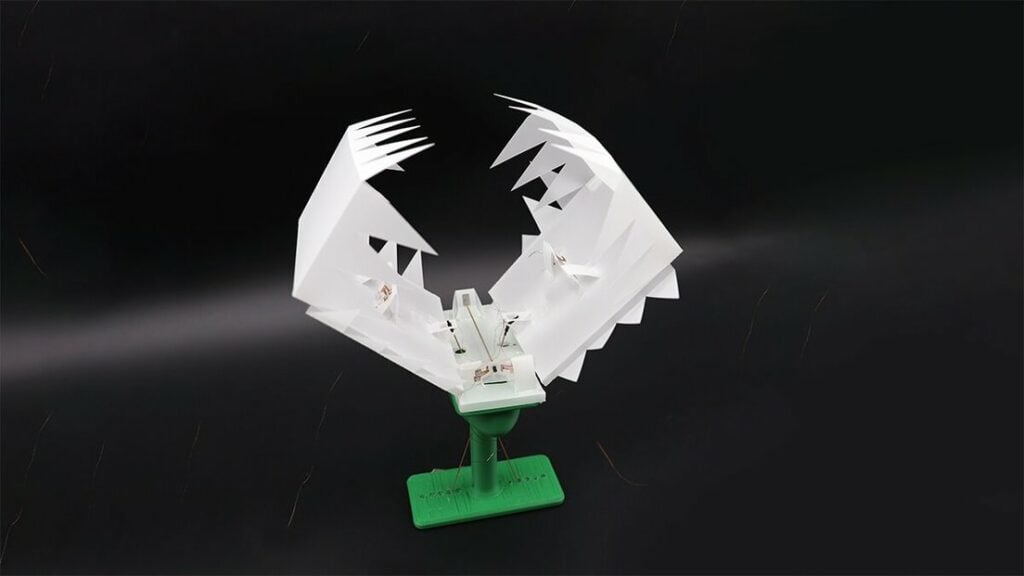Inspenet, April 13, 2023
A multidisciplinary team of robotics specialists, led by the University of California (UCLA) , USA, designed robots with thin and flexible sheets, inspired by origami. The new OrigaMechs are lightweight, simple and inexpensive to manufacture, more compact than usual for easy storage and transport.
A new class of origami robots
Engineers created a new technique for making fully foldable robots, which can perform a variety of complex tasks without relying on semiconductors. By incorporating flexible materials and electrical conductors into a thin, pre-cut sheet of polyester, they created a system of information processing units, or transistors, that can be integrated with sensors and actuators.
The researchers named their robots “OrigaMechs,” short for Origami MechanoBots, because once the thin sheet is cut, folded, and assembled, it transforms into an autonomous robot that can precisely sense, analyze, and act in response to its environment. . The wafer is programmed with simple commands that emulate semiconductors. The research results were published in Nature Communications .
“This work leads to a new class of origami robots with expanded capabilities and levels of autonomy, while maintaining the favorable attributes associated with origami folding-based manufacturing,” explained lead author Wenzhong Yan of UCLA. . The researchers propose that, later, they will equip them with an energy storage system made up of lithium and thin-film batteries.
OrigaMechs for extreme environments
The team built prototypes to demonstrate the potential of the system. For example, a walking, insect-like robot that changes direction when any of its antennae detects an obstacle. Also another resembling a Venus flytrap, engulfing “prey” when its two jaw sensors detect an object. A reprogrammable two-wheeled third party that can move along pre-designed paths of different geometric patterns.

The novel design, without semiconductor chips, may result in robots capable of working in extreme environments – strong radioactive or magnetic fields and places with strong radio frequency signals or high electrostatic discharge – where traditional electronics might not work. In addition, being pre-assembled they could be transported in flat packs and thus save a lot of space on space missions, where every cubic centimeter counts.
“Dangerous or unpredictable scenarios, such as during a natural or man-made disaster, could be where origami robots prove especially useful,” said lead author Ankur Mehta, a UCLA professor. “Robots could be designed for special functions and manufactured on demand very quickly,” he added. “Also, while that is a long way off, there could be environments on other planets where rovers that are immune to those scenarios would be highly desirable.”
Source : https://actualidad.rt.com/actualidad/462876-disenan-origamechs-robots-entornos-desafiantes
Photos : Wenzhong Yan/UCLA – Samueli/UCLA
Don’t miss the Inspenet News at: https://inspenet.com/inspenet-tv/

